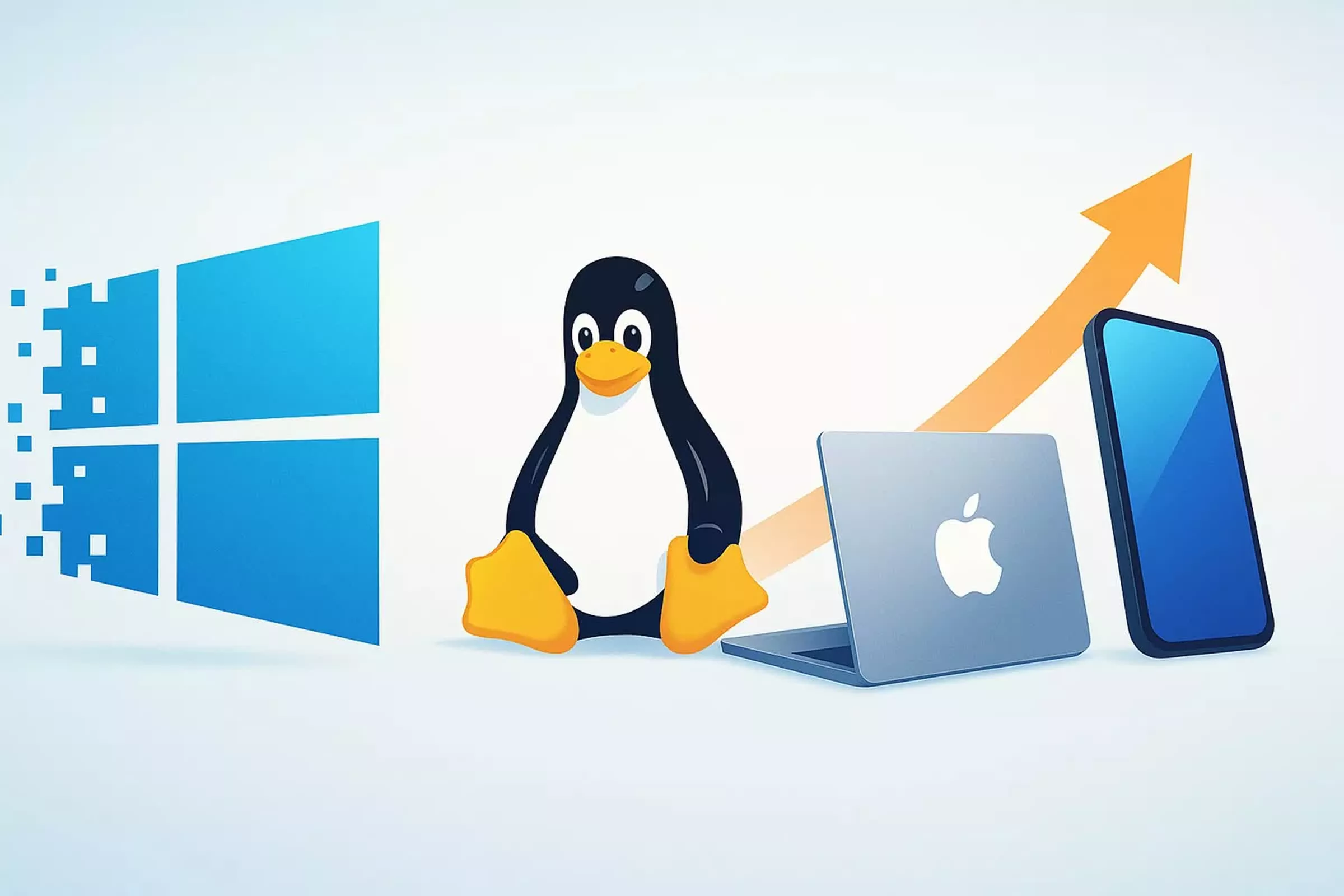In brief: New data reveals how the American desktop landscape is shifting. Linux has achieved a new milestone in the United States, breaking the 5 percent barrier for desktop operating system market share for the first time. The OS now holds 5.03 percent of the desktop market in the country, marking a significant landmark in the journey of open-source computing.

According to StatCounter's Global Stats for June 2025, Windows remains the clear leader, commanding 63.2 percent of the market, but it has experienced a steady decline, losing nearly 13 percentage points over the past ten years. Apple's presence, split between OS X at 16.57 percent and macOS at 7.72 percent, collectively accounts for nearly 24 percent. The "Unknown" operating system category accounts for 4.76 percent, while Chrome OS comprises 2.71 percent of the desktop ecosystem.
The growth of Linux beyond the five percent mark means it now surpasses the "Unknown" category for the first time, a symbolic threshold for the open-source community and advocates who have long pushed for wider adoption. This trend indicates a growing interest among American computer users in seeking alternatives to mainstream platforms.
Several factors have driven this renewed momentum for Linux. One notable contributor is user dissatisfaction with Microsoft's ecosystem. The upcoming end-of-life for Windows 10 has prompted owners of older hardware to reconsider upgrading, as Windows 11's requirements often necessitate new purchases. Additionally, ongoing privacy concerns, forced system updates, adware, and Microsoft's approach to AI data collection have motivated many to explore open-source platforms.
Source: StatCounter Global Stats - OS Market Share
The gaming sector has also contributed to Linux's surge. The popularity of Valve's Steam Deck, which runs on a Linux-based operating system, has introduced the flexibility and customization of Linux to a new generation of gamers, broadening the platform's appeal beyond traditional tech-savvy users.
Linux's development has contributed to its rising profile. Distributions like Ubuntu and Linux Mint have made significant improvements in usability over recent years, lowering the barrier for non-technical users to set up and maintain the system. The open-source ethos of privacy and control continues to resonate, alongside the benefit of giving older computers a new lease of life with modern, efficient Linux distributions. Compatibility with a wide range of applications has improved, boosted by projects like Wine and expanded hardware support.
There is also discussion within the community that the actual market share for Linux could be underreported. Many privacy-conscious Linux users take measures, such as changing their user agent or blocking website trackers, which can make them invisible to metrics that depend on web analytics. With 4.76 percent of systems in the StatCounter report categorized as "Unknown," a portion of these devices may be running Linux, but go undetected.
Open-source enthusiasts also highlight the relationship between Linux and Chrome OS. Google's operating system, which accounts for 2.71 percent of the market, is built on the Linux kernel. When combined, their total market presence – sometimes referred to as the "Linux family" – reaches 7.74 percent, further underscoring the growing influence of Linux-derived systems in the US desktop market.
The trajectory for Linux has been one of slow beginnings followed by steady acceleration. Data show that it took Linux eight years to increase its market share from one percent to two percent by April 2021. Yet, in just over three more years, it quadrupled to reach 5 percent.
Linux surpasses 5% market share on US desktops for the first time